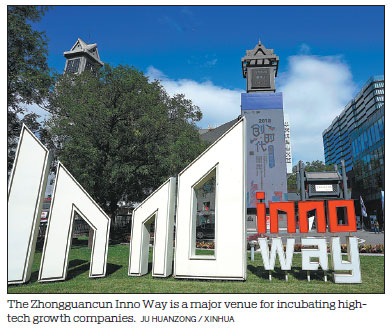Research results fuel high-quality growth
Nano satellites, 3D-printing implantable metal, electron accelerators for medical use, high-precision and super-heavy-duty turning-milling machines hit the headlines in Beijing's media after they were awarded at a conference on March 1 to mark the city's prominent research results in 2018.
The technologies were hailed as the leading achievements among the 212 research results that were awarded at the meeting, according to Science and Technology Daily.
Commenting on these remarkable achievements, the Beijing-based newspaper said the technologies are crucial for China's ambition to be an innovative country, stand at the cutting edge of global frontier industries and will support the nation's high-quality growth.
It said they have also displayed Beijing's strength and leading role in the nation's science and technology innovation.
The nano satellite, a first-prize winner from the Tsinghua University research team led by professor You Zheng, is said to be a "revolutionary technology" in the astronautic industry.
Nano satellites are satellites of low mass and size, usually less than 10 kilograms.
The satellites are built small to reduce the cost of launch and the costs associated with construction. Nano satellites, especially in large numbers, can sometimes be more useful than fewer, larger ones for some purposes - for example, gathering scientific data and radio relay.
Technical challenges in the making of small satellites may include the lack of sufficient power storage or room for a propulsion system.
The Tsinghua University team also successfully developed a number of technologies and products relating to the nano satellite, which can better serve China's astronautic industry.
Another first-prize winner is the high-precision super-heavy-duty turning-milling machine developed by a Beijing University of Technology research team headed by professor Liu Zhifeng.
The machine can be used to make crucial components for China's advanced equipment manufacturing industry.
Other breakthroughs include an anti-attack cryptographic engine for digital signal processors. The technology is said to be essential for cyber security and has already been used in the smart city projects in more than 50 Chinese cities.
Statistics from the Beijing Municipal Science and Technology Commission showed that Beijing's four major high-tech zones - Zhongguancun Science City, Huairou Science City, Future Science City and Beijing Economic-Technological Development Area - contributed 154, or 72.6 percent, of the 212 awarded research results.
In addition, 87 awarded results, or 41 percent of the total, were made by corporate research teams, showing the enterprises have become increasingly important in Beijing's innovation-driven growth.
Another feature of this year's awarding event is that the average age of researchers of awarded technologies is 44 and 45 percent of them are younger than 40, showing the growing role of younger professionals.
Organizers of the event said there will be special awards to prominent researchers at next year's event.

